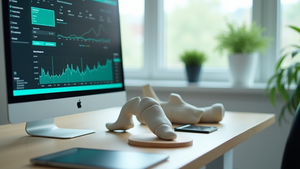History of Orthotic Care
The history of orthotic care dates back thousands of years, with ancient civilizations using primitive padding and supports to alleviate foot pain. Modern orthotic science emerged in the late 19th century when medical professionals began creating custom shoe inserts to address biomechanical issues. Technological advancements in the late 20th century, including computerized gait analysis and 3D scanning, revolutionized the precision of orthotic devices. Today's orthotics incorporate advanced materials and manufacturing techniques that combine durability, flexibility, and targeted support, marking the evolution from simple foot pads to sophisticated medical devices designed to address complex problems throughout the entire body.

How Chiropractic Therapy Can Help
Chiropractic care works synergistically with orthotic therapy by addressing the entire kinetic chain. While orthotics correct foot mechanics, chiropractors evaluate and treat the resulting spinal and joint misalignments that develop due to years of improper biomechanics. This integrated approach recognizes that foot problems affect the entire body and vice versa. Chiropractors can provide spinal adjustments that complement orthotic support, helping to restore proper alignment from the ground up. Many chiropractors are also trained in gait analysis and can identify subtle movement patterns that indicate the need for orthotic intervention. Through a combination of adjustments, soft tissue techniques, exercise recommendations, and orthotic therapy, chiropractors offer comprehensive treatment that addresses both symptoms and underlying causes. This multidisciplinary approach often yields faster, more complete resolution of pain and dysfunction than either treatment alone.
Benefits of Orthotics
01
REDUCED
PAIN
02
DECREASED INJURY RISK
03
BETTER PERFORMANCE

What Happens if You Don't Get Care
Neglecting foot and alignment issues that could benefit from orthotic intervention often leads to a cascade of compensatory problems. Minor discomfort can progress to chronic pain as the body attempts to adjust to improper mechanics. Without correction, simple conditions like flat feet or high arches may contribute to more serious issues. The compensatory movements adopted to avoid foot pain frequently create misalignments up the kinetic chain, potentially causing knee, hip, and back problems. Over time, untreated issues can accelerate joint wear, limit mobility, reduce quality of life, and even impact balance and stability, increasing fall risk, particularly in older adults. Additionally, certain populations, such as those with diabetes, face increased risks of serious complications including dangerous foot ulcers when proper foot support is neglected, which is why seeing a qualified chiropractor is important for foot health.
Conditions
01
PLANTAR FASCIITIS
02
FLAT
FEET
03
JOINT AND BACK
PAIN
Blog
FAQ
Difference between custom orthotics and OTC insoles?
Custom orthotics are prescribed devices made from precise measurements of your feet, designed to address your specific biomechanical issues. Over-the-counter insoles provide general cushioning and support but aren't tailored to your unique foot structure or problems. Custom devices typically last longer, provide more targeted correction, and address specific medical conditions.
Can chirotherapy and orthotics help with arthritis pain?
Yes, orthotics can significantly reduce arthritis pain by improving joint alignment, reducing pressure on affected areas, and limiting excessive motion. They're particularly beneficial for arthritis affecting the feet, knees, and hips.
What is a gait analysis, and do I need one?
A gait analysis looks at how you walk or run to spot imbalances or movement issues. Using tools like pressure plates or video, specialists assess your feet, ankles, knees, hips, and lower back. The results help guide treatments such as custom orthotics or exercises to improve comfort, balance, and mobility.









